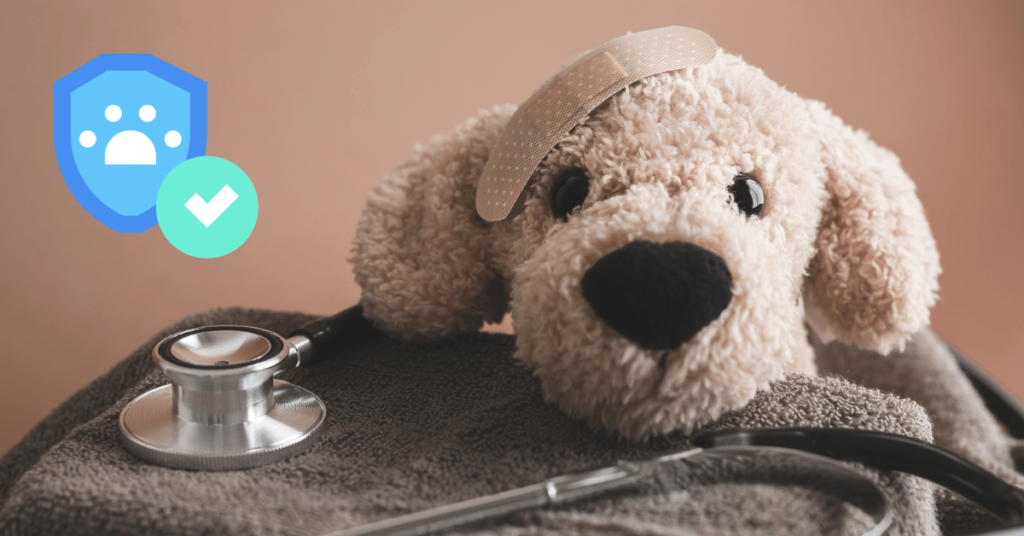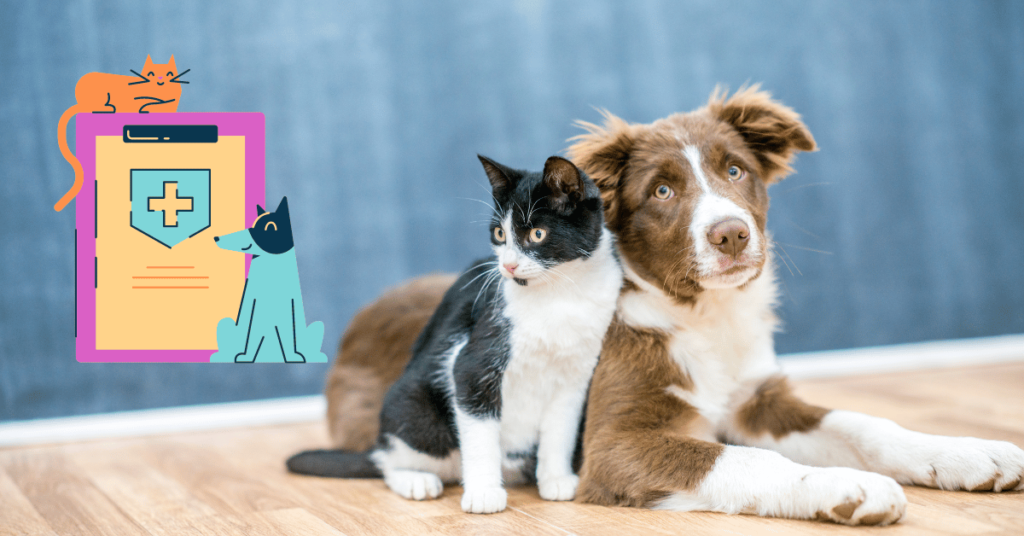Pet insurance is a way to manage unexpected veterinary costs by offering coverage for accidents, illnesses, and sometimes routine care. Unlike human health insurance, pet insurance works more like property insurance, where you pay for the care upfront and get reimbursed later. It offers pet owners peace of mind, knowing they won’t face the full financial burden when their pet needs medical attention.
What Is Pet Insurance?
Pet insurance is a policy purchased by pet owners to cover part of their pet’s medical expenses. The owner pays monthly or annual premiums to the insurance company, and in return, the insurer covers eligible veterinary costs, either fully or partially. This coverage can be especially valuable in the case of unexpected accidents or illnesses that result in costly treatments.
How Pet Insurance Works

Pet insurance involves paying a monthly or annual premium to an insurer. When your pet gets sick or injured, you pay the vet for their services, and then you file a claim with your insurance provider. Depending on the policy, you can get reimbursed for a portion of the costs, usually after meeting a deductible. Here’s a detailed breakdown of the process:
1. Paying for Treatment
After visiting a veterinarian, you’ll need to cover the full cost of the treatment upfront. Whether it’s an accident, illness, or routine care (depending on the policy), payment is due immediately. Pet insurance doesn’t directly pay the vet as human health insurance does.
2. Submitting a Claim
Once you’ve paid the bill, you’ll file a claim with your pet insurance provider. This usually involves submitting the itemized receipt from the vet and completing a claim form, which can be done online or via mail, depending on the insurer.
3. Reimbursement
After reviewing the claim, the insurance company reimburses you for the portion of the cost that is covered under your policy. Most plans cover 70% to 90% of eligible expenses after you’ve met the deductible. The reimbursement amount and speed vary depending on the insurer.
Deductibles, Premiums, and Co-Pays
To understand how much you’ll pay for pet insurance, it’s important to know the basic cost components:
- Premiums: The monthly or annual amount you pay to maintain the policy. Premiums vary depending on the pet’s breed, age, location, and the type of coverage chosen.
- Deductibles: This is the amount you must pay out of pocket before the insurance starts covering the bills. Deductibles can be per incident or annual. Policies with higher deductibles generally have lower premiums.
- Co-Pay: After meeting the deductible, you’ll still be responsible for a portion of the vet bill, usually around 10% to 30%. The insurance company will cover the remaining percentage.
Example:
If your policy has a 90% reimbursement rate, a $100 deductible, and a $1,000 vet bill:
- You first pay the $100 deductible.
- The insurer then reimburses 90% of the remaining $900, which amounts to $810.
- Your total out-of-pocket cost is $190.
What Does Pet Insurance Cover?
Coverage can vary widely depending on the plan you choose. Typically, policies fall into three main categories:
1. Accident-Only Coverage
This covers medical bills from unexpected injuries, such as broken bones or cuts. It doesn’t cover illnesses or routine care.
2. Accident and Illness Coverage
This is a comprehensive plan that covers both accidents and a wide range of illnesses, such as infections, cancer, or digestive issues. This is the most popular type of coverage.
3. Wellness Plans
Some pet insurers offer wellness plans that cover routine care, including vaccinations, flea control, dental cleanings, and annual checkups. These plans are usually optional and may be added to an accident or illness plan.
Key Factors That Affect Pet Insurance Costs
Several factors influence the cost of pet insurance premiums:
- Species: Dogs generally cost more to insure than cats.
- Breed: Some breeds are more prone to certain health conditions, which can raise the premium.
- Age: Older pets tend to have more health problems, so premiums increase as your pet ages.
- Location: Veterinary care costs vary by region, so premiums may be higher in metropolitan areas.
Exclusions in Pet Insurance
Pet insurance policies come with exclusions, which means there are specific treatments or conditions that will not be covered. Common exclusions include:
- Pre-existing conditions: If your pet has a medical condition before the policy starts, it will not be covered.
- Routine or preventive care: Unless you have a wellness plan, routine checkups, vaccinations, and preventive treatments may not be included.
- Hereditary conditions: Some breeds are prone to certain genetic conditions, and some policies won’t cover these.
- Elective procedures: Treatments like cosmetic surgery, nail trimming, or grooming are typically not covered.
Waiting Periods
Most pet insurance policies have waiting periods before coverage kicks in. This means if your pet gets sick or injured shortly after you purchase the policy, the insurer may not cover the claim. Typical waiting periods include:
- Accident Coverage: Usually 1 to 3 days after the policy starts.
- Illness Coverage: Often 14 to 30 days after the policy begins.
There are no waiting periods for routine wellness care if you have a wellness plan.
Choosing the Right Pet Insurance Plan

When selecting a pet insurance plan, it’s important to consider your pet’s needs, budget, and coverage options. Ask yourself the following:
- What’s the age of your pet? Older pets often have higher premiums, and some insurers have age limits.
- Does your pet have pre-existing conditions? These won’t be covered, so it may be better to self-insure (set money aside) if your pet already has health issues.
- What’s your budget? Choose a plan with premiums, deductibles, and co-pays that you can afford. A high-deductible plan may save you money on premiums but will require more out-of-pocket costs during a claim.
Advantages of Pet Insurance
Pet insurance can offer peace of mind and financial protection in the event of serious health problems. Some key benefits include:
- Financial Security: Pet insurance helps mitigate the financial impact of expensive treatments and emergency procedures.
- Choice of Vet: Most insurers allow you to choose any licensed veterinarian, so you’re not restricted to specific doctors or clinics.
- Simple Policies: Pet insurance policies are often straightforward and easy to understand, with options tailored to different needs.
Disadvantages of Pet Insurance
While pet insurance can be valuable, there are some potential drawbacks:
- Pre-existing Conditions Are Not Covered: If your pet has a pre-existing health condition, it will not be covered by most policies.
- You Pay Upfront: Unlike human health insurance, you must pay the vet bill first and wait for reimbursement.
- Premiums Increase Over Time: As your pet ages, premiums tend to rise due to the increased likelihood of health issues.
Is Pet Insurance Worth It?
Pet insurance can be a great financial safety net in the event of major medical emergencies or chronic illnesses. However, for pets that rarely need medical attention, the cost of premiums may exceed the benefits. It’s essential to evaluate your pet’s health history and potential future needs when deciding if pet insurance is a smart investment for you.
Conclusion
Pet insurance offers peace of mind by covering a portion of the costs of vet bills in the event of accidents or illnesses. While you must pay the vet first and then file for reimbursement, pet insurance can save you from significant financial burdens when unexpected health problems arise. By understanding how premiums, deductibles, and coverage work, you can choose the best policy for your pet and budget.
So that was all about this article. If you have any further questions feel free to comment down below. We are always here to help you!




